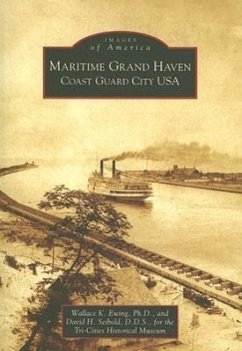Settlers arrived at the mouth of the Grand River on November 2, 1984. Their community was christened Grand Haven, as it offered a secure harbor. As the logging industry grew, shipping expanded, and Grand Haven Harbor became especially busy during the financial boom and westward expansion that followed the Civil War. Northwest Ottawa County became an established resort destination, and passenger boats frequented the harbor as well. Heavy traffic through Grand Haven caused concern about shipwrecks. The first crew of lifesavers was formed in 1871 and soon joined the United States Lifesaving Service. In 1915, the United States Lifesaving Service merged with the Untied States Coast Guard. Grand Haven has long had a proud association with these dedicated crews, and in 1998, the relationship was marked when Congress designated it "Coast Guard City USA."
Bitte wählen Sie Ihr Anliegen aus.
Rechnungen
Retourenschein anfordern
Bestellstatus
Storno

